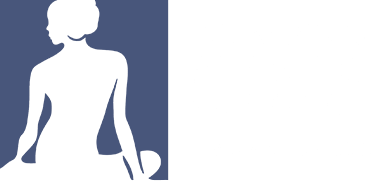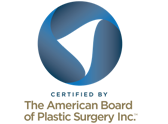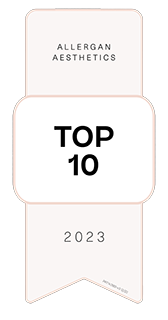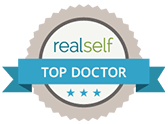It’s All About The Breasts
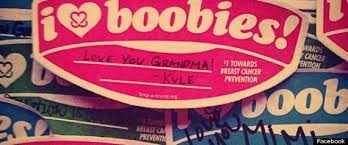
Breasts, boobies, tatas, “the girls” – with society’s obsession with our bosoms, you’d think we’d know everything about them. But surprisingly, beyond knowing all the different terms used to describe our mammaries, many of us know little to nothing about our breasts and how to take the best care of them.
October is Breast Cancer Awareness Month, and it’s the perfect time to learn more about that region of our body that seems to fascinate us (and everyone else) so much.
What Are Breasts?
Breasts are the tissues that cover the chest, or pectoral muscles. These tissues include glandular, or milk-producing tissue, and fatty tissue which determines whether they’re big or small.
Connective tissue and ligaments support the breasts and give them their shape. That circle around the nipple? It’s called the areola, and it comes in all colors and sizes, from small to large and pink to dark brown.
The breasts also have blood vessels and vessels that carry colorless fluid called lymph. The lymph vessels lead to small bean-shaped structures called lymph nodes. Clusters of lymph nodes are found in the axilla (under the arm), above the collarbone and in the chest.
10 Ways to Keep Breasts Healthy
Everyone knows the best defense is a good offense, so live a healthy lifestyle to prevent disease. Here are 7 key lifestyle habits to keep in mind:
Know your family history. Family history is a factor in about 15 percent of breast cancer cases. One first-degree relative with breast cancer doubles your lifetime risk, and two increases your risk five times.
Get checked regularly. All women should have a clinical breast exam at least every three years and annual exams and mammograms beginning at age 40. Women with a family history of breast cancer should begin screening 10 years prior to the family member’s age of diagnosis. Look for a facility that offers digital mammography which allows for adjustments in contrast so the image can be viewed more clearly. Young women at increased risk may also want to request an MRI or a sonogram as well.
Breastfeed. In addition to reducing the risk of breast cancer, breastfeeding can also help reduce the risk of type-2 diabetes, ovarian cancer, and postpartum depression.
Get to and maintain a healthy weight. Being overweight can increase your risk of developing breast cancer and reduce your risk of surviving it. If you’re overweight or obese, start by losing at least 10% of your body weight. Just doing that will reduce your risk of a number of diseases, including cancer and hypertension.
Get moving. Engage in vigorous physical activity for 45 minutes to an hour, five days a week. Regular fitness workouts may help prevent diseases like breast cancer by boosting immune function, warding off obesity, and lowering levels of estrogen and insulin.
Don’t drink like a fish. Studies have shown that two drinks a day could increase breast cancer risk by 21 percent. Instead of being a wino, try drinking some grape juice instead. Resveratrol, a compound found in grape skins, may help reduce your estrogen levels and reduce your risk of developing breast cancer.
Go green. Eating a lot of low-fat vegetables, especially raw cruciferous vegetables like broccoli, cauliflower, and kale, can do wonders for your health. They contain sulforaphane, which is believed to help prevent cancer cells from multiplying.
Limit menopausal hormone use. Studies have found that estrogen plus progestin increases the risk of both developing and dying from breast cancer. When women take these hormones, their risk of having an abnormal mammogram increases within the first year of use. And, their risk of breast cancer increases within the first five years of use. So always discuss with your physician the risks and benefits involved with menopausal hormone therapy (MHT).
Think about getting tested. Getting tested is always a good thing! When young women develop breast cancer, it’s often associated with a BRCA1 of BRCA2 gene mutation. If you have a family history of both breast and ovarian cancer, or if you are of Ashkenazi (Eastern Eurpoean) Jewish descent, you are a carrier and should definitely consider getting genetic testing.
Keep your gut healthy. A recent study found that having greater microbial diversity in the gut promoted a more favorable ratio of estrogen metabolites, suggesting that a healthy gut with more communities of different bacteria could lower the risk of developing breast cancer.
Better Boobs
Learning about breasts doesn’t just include breast health – it includes breast appearance, too! Now that we’ve got the serious stuff covered, let’s talk about how we can support our breasts and make them look good.
When it comes to our bosoms, making a mountain out of a molehill isn’t necessarily a bad thing! And well, when motherhood, age, and gravity start to take their toll, we may want to help our girls look the way they used to. If you want to make your breasts look better, there are a number of solutions both non-surgical and surgical. You can:
Exercise. Doing exercises like push-ups and lifting dumbbells can strengthen pectoral muscles beneath the breast tissue, giving them a slight boost in size and shape, with a little lift.
Wear the right bra. Wearing a bra that fits correctly can make a big difference in how your breasts look by giving them lift. A padded bra can give extra volume and oomph, for those days when you want to look a little…extra.
Contour. Just as you can contour your facial features with makeup, you can create illusions with makeup on your breasts! Apply a bronzer or powder darker than your skin color in the area down in your cleavage area, moving down in between your breasts. Blend this color up and outward, making a v-shape along the natural curve of your breasts. Brush a lighter shade of powder, such as gold or peach, over the top half of your breasts. Use a sponge to blend the shade and create a natural, more full look for your breasts.
Stand up straight. Poor posture means breasts that are hunched over and droopy looking. Standing with your back straight and chest out with make your breasts look bigger and perkier.
Dress to impress. Wearing a top with bust detail like ruffles or an empire neckline can make smaller breasts look bigger. Lower, but not too-low, necklines can also enhance cleavage and draw attention to breasts. Shirts that are too tight or don’t fit correctly can actually make breasts look smaller.
Get a breast augmentation. A surgical solution for those who want larger or fuller breasts. There are many types of breast implants, including saline (uniform shape, firmness and feel) and silicone gel (feels a bit more like natural breast tissue).
While many people believe breast augmentations are a one-time permanent solution, it’s important to know that implants are not designed to last forever. They may need to be replaced, so you should see your plastic surgeon for an annual examination to evaluate breast health and implant integrity. And if you choose to take this route, make sure you consult with your plastic surgeon and get a full understanding of the risks and results, so that you increase your chances of a speedy recovery and a great look.
Get a breast lift. Of course not everyone wants bigger boobs. Some of us want breasts that are just a little more “uplifted,” and for that, a breast mastopexy can be the solution. In a breast lift, breasts are raised by removing excess skin and tightening the surrounding tissue to reshape and support the new breast contour. A breast lift can also reduce the size of the areolas.
A growing plastic surgery trend is the “mommy makeover,” a combination of a tummy tuck and breast lift and/or augmentation, to help their post-pregnancy bodies look more like their pre-pregnancy bodies.
Get a breast reduction. And for those of us who have breasts that are literally a big burden, a breast reduction, or mammaplasty, can remove excess breast fat, glandular tissue, and skin, to achieve more proportional breasts and alleviate the discomfort (back pain, shoulder pain) associated with overly large breasts.
Breasts are not only functional, they’re beautiful, too. No matter their shape or color, whether big or small, natural or enhanced, your breasts are a part of your body, so love them and take good care of them!
